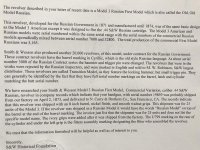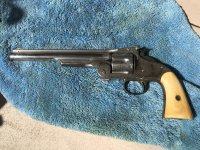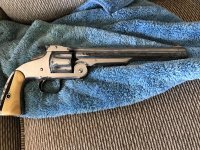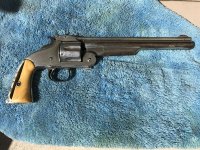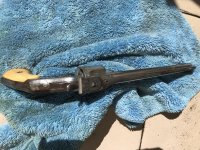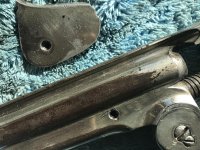- Joined
- Mar 17, 2005
- Messages
- 26,097
- Reaction score
- 46,832
It means case hardened.
Lee, I certainly didn't suggest that one "beat" on the stock screw with a sledge hammer. Nor would I think that anyone with half a brain would use the tip of the screwdriver to tap on the second panel. I believe that I said "turn the gun over and gently tap on the inside of the remaining panel through the opening in the frame". That can be accomplished by a finger tip or I sometimes use a wooden dowel. I also suggested a hairdryer, not a flame thrower.
IMHO, not removing the stocks can allow the crud underneath to continue to destroy the metal frame and hurt the gun. Certainly my method is better than taking a razor knife, a putty knife or a screwdriver and prying them off as I have seen done.
Perhaps explaining your method would be more productive than ridiculing mine.
James,
I had no intention of offending you, much less making you feel ridiculed.
I stick by what I said, but confess I could have said it much more tactfully.
For that, you have my sincere apology.
I'm sure you are skilled at messing with this old stuff we both love, and I'm sure your methods work for you.
I'll still suggest you be very careful heating ivory. I've dabbled in it (collected/dealt ivory items for many decades off and on), and I can tell you heat can make it do some very bad things at times. You don't get a second chance when it goes badly.
In over nine years of running this board, I've seen a little knowledge be a very dangerous thing. With the nut on this gun right beside the edge of the split grip, any tapping, or even pushing is ill advised. The nut is almost certain to come out and probably chip little flakes of ivory. With half the grip gone, it should be no problem to simply pull the grip off. If really stuck that tight, which I doubt because when that old they always tend to shrink, I would pry gently with a wooden clothes pin.
When you say
"turn the gun over and gently tap on the inside of the remaining panel through the opening in the frame.",
most folks are going to use the screwdriver since they are already holding it! Better mention that dowel.
Anyway, I probably got panicky, getting this mental picture-
Bubba comes to forum.
Bubba reads about tapping grips off.
Bubba says "Aha! That's how ya do it!"
Then, we hear:
tap....tap...tap
TAP-TAP-TAP
TAP-TAP-TAP
hmmmm......this ain't wurkin.....
>>>>>Light Bulb!<<<<<<<
"I need a bigger hammer!"
FWIW, that American I posted above looked about like Pam's when I got it, but possibly not as milky.
About the fifth time I opened the gun, the latch spring broke. Try finding that sometime. It is a V spring. I made one from a lever spring for a double shotgun.
Last edited:

